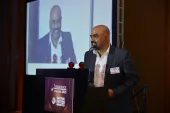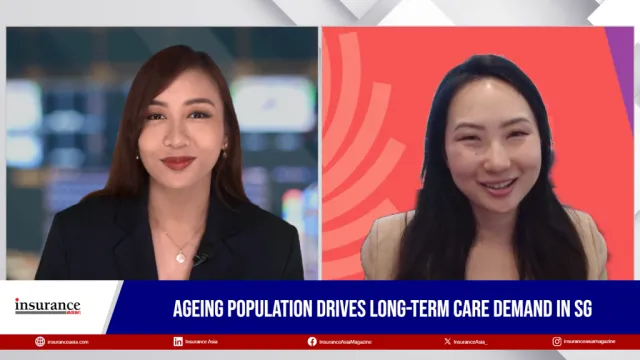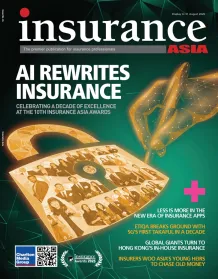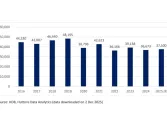
The adoption of GenAI is set to reshape the insurance value chain – Boston Consulting Group’s Paul Brenchley
He discussed how insurers can leverage GenAI, especially in building new O2O channels to stay competitive in a digital-first world.
The insurance industry is undergoing rapid change, with digital disruptors, evolving customer expectations, and global pressures reshaping traditional models. In Southeast Asia, where growth is fast and diverse, insurers must seamlessly balance innovation with existing operational strengths to stay ahead.
Offering his invaluable insights and expertise is Paul Brenchley, Managing Director and Partner at Boston Consulting Group (BCG), with over 20 years of experience in the insurance industry. He has worked extensively with a wide variety of different insurance companies and has now spent over a decade based in Southeast Asia.
His expertise covers a wide range of areas, including the development of new business strategies, building new sales channels and propositions, as well as improving customer experiences and delivering operational efficiencies.
As a judge at the Insurance Asia Awards 2025, Mr Brenchley highlights that insurers must leverage new digital technologies to augment their existing core strengths to thrive in Southeast Asia’s fast-evolving insurance landscape.
With the rise of insurtech and digital-first insurers, how do traditional insurers maintain their competitive edge whilst effectively integrating innovation and technology into their operations?
Many insurers are staying ahead by adopting new digitally-augmented ways of working to enhance their existing business strengths. As an example, we are seeing new online-to-offline (O2O) distribution models fast emerge that look to reach out in meaningful ways to digitally savvy customers whilst at the same time embedding the same high quality advice provided by traditional distribution channels. These new O2O channels have emerged because more customers are starting their insurance buying journeys online, often through their bank’s websites or app or other digital platforms, where they will undertake initial research and fact-finding.
Whilst we have seen a strong trend for fully digital general insurance purchases, especially embedding solutions with ecosystem partners, life insurance is different. Here there has been little traction for fully digital purchasing, as customers want to speak to an advisor before making their purchase due to the size of the investment they are making and the relative complexity of life insurance products. The leading O2O channels have leveraged new technologies like GenAI and AI to build needs-based digital marketing content, assist advisors in client calls and next best actions, embed propensity models for customer targeting, and support sales through automated digital nurturing. Put together such a model can offer a seamless customer sales experience which is digitally enabled but still centered around insurer’s core strength of advice.
As customer expectations evolve, can insurers ensure they deliver seamless, inclusive, and consistently high-quality experiences across the customer journey?
Improving customer experiences has been a focus for a number of industry players as they look to differentiate themselves from their peers by driving more meaningful and personalised customer engagements. Traditionally many insurers have acted as pure product providers for their intermediaries and have not focussed on the experiences they offer. However changing expectations driven by leading brands in the market that customers engage with daily has bought the quality of the experience insurers offer into much more focus.
To enhance customers experiences many insurers have hired Chief Customer Officers to work across the different business functions to improve customer journeys especially digital interactions, build a customer-centric culture, and develop new value-adding service offerings. Many insurers are also progressing with the use of data and GenAI / AI to deliver more personalised products, pricing, and services to their customers. Greater personalisation is having real impacts and can boost cross-sales by as much as 20%, and in some instances has helped double customer retention and triple conversion rates.
From your experience supporting insurers across the region, what do you see as the key components of a resilient and adaptable growth strategy, especially within Southeast Asia’s diverse and evolving regulatory environments?
Insurance in Southeast Asia continues to be an intermediated business, and hence, having strong bank partners, a productive agency force, and effective broker and FA relationships will continue to be vital for all insurers to succeed across the region. To drive their business forwards, we are seeing improvements such as the emergence of greater professionalism when it comes to agency, targeting new customer segments beyond the high net worth with bank partners, and continuing close engagement and support to brokers and FAs. This is alongside integrating new digital tools
Customer expectations and preferences are also changing fast, especially with younger generations, and so the ability to connect in a meaningful manner with these next-generation customers will be increasingly important to ensure the continued relevance of the insurance industry for years to come. Insurers need to build new capabilities to be able to provide next-gen customers with the products and services they want, when they want them, and to engage them in the manner they want to engage.
Looking ahead, what major trends do you believe will define the insurance industry's future, and how should insurers begin preparing today?
In my view, the top three trends that will define the industry’s future are:
Given populations in Southeast Asia are some of the fastest-ageing in the world, insurers will need to react by developing new solutions addressing retirement needs and ensuring they have adequate health coverage
Non-life insurers in Southeast Asia are at the front line of the impacts of climate change with more frequent and severe weather events combined with increasing costs of cat claims. These insurers will need to continue to evolve their underwriting and products to remain relevant and manage profitability.
The adoption of new technologies such as GenAI has the potential to significantly change the way that insurance companies operate across the full value chain, from the way they engage customers to how they support their intermediaries. Those insurers accelerating the implementation of GenAI-driven tools within their business will find competitive advantages over their peers. As an example, one large insurance company is anticipating that it could improve productivity by 20% to 30% through large-scale adoption of GenAI for administrative tasks related to claims.
As a judge for the Insurance Asia Awards 2025, what criteria will you be using to evaluate the nominees?
My top three areas of focus would be: achievements that stand out above and beyond those of peers in terms of positive business impacts; companies that have addressed meaningful industry challenges for the benefit of their customers and society as a whole; and innovative solutions that have had positive impacts on their business and employees.



















 Advertise
Advertise






